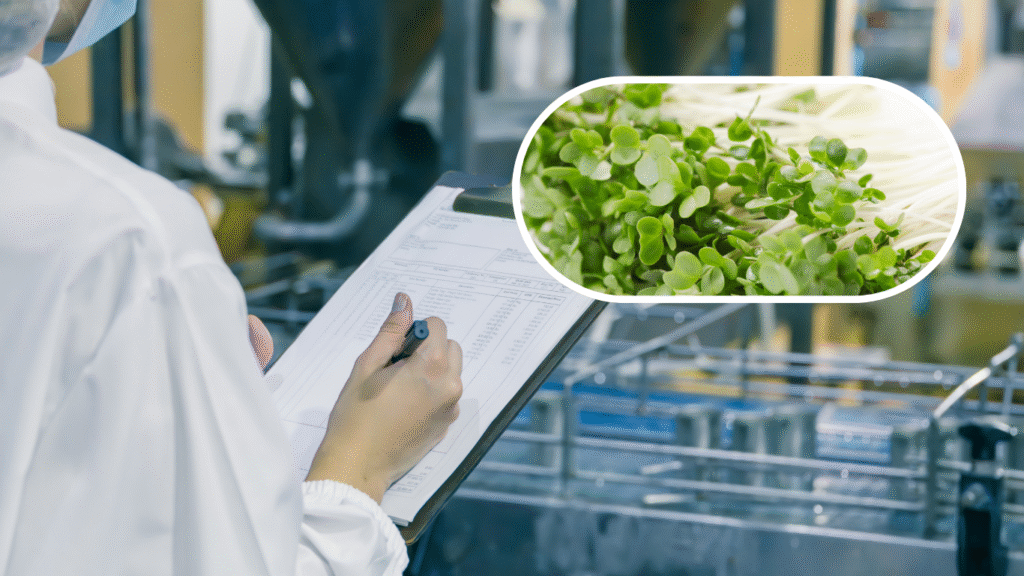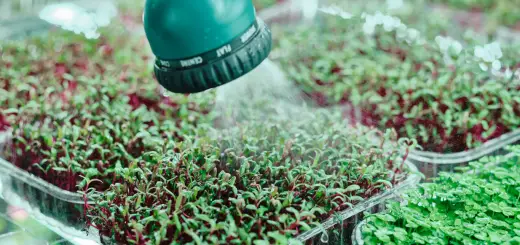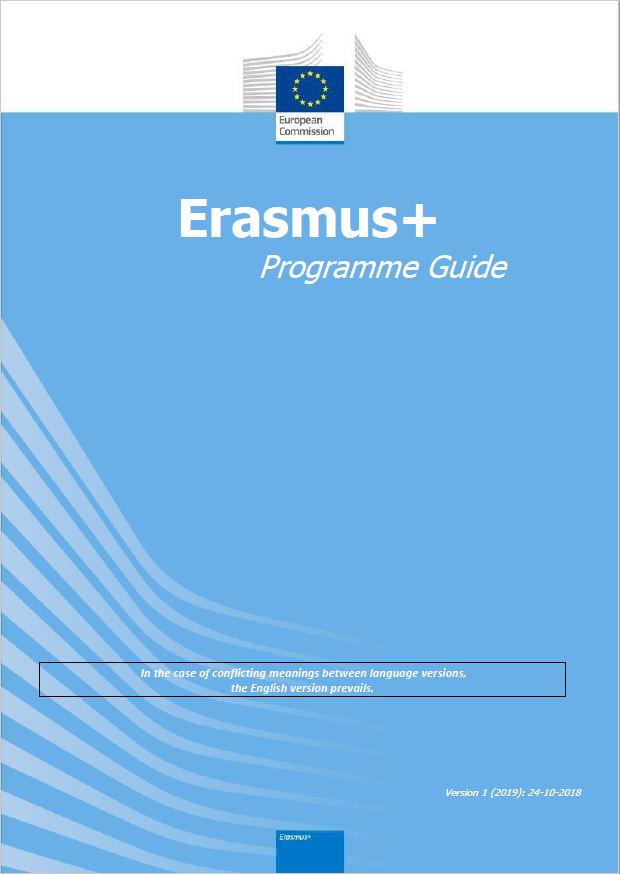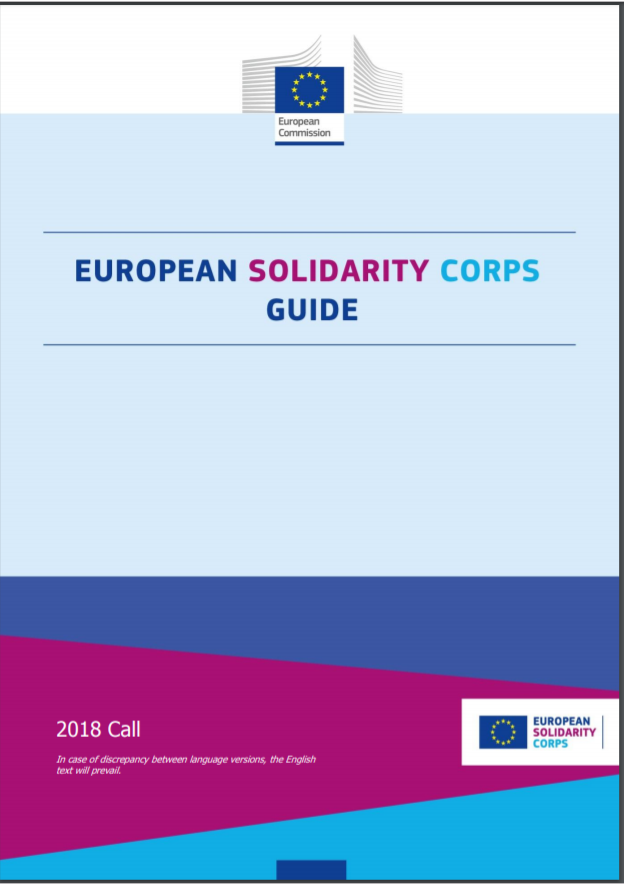International sanitary guidelines for the planting and distribution of microgreens and sprouts

Microgreens being products that are usually consumed raw and cultivated in warm and humid environments, represent a particular challenge in terms of food safety. Both in the Americas and in Europe, regulations and guidelines have been developed with the aim of reducing risks and ensuring consumer safety. Let us review them.
First, let us clarify the following concepts…
Differences between microgreens and sprouts
Although they are often confused, there is a fundamental distinction between the two:
- Sprouts: harvested in the earliest stages of germination, including roots, cotyledons, and sometimes the seed itself. They grow in very humid conditions that favor the development of bacteria such as E. coli or Salmonella.
- Microgreens: grown in solid substrates until the first true leaves emerge. Their risk is lower than that of sprouts, but not nonexistent, since the growing environment (temperature, humidity, substrate) can facilitate microbial proliferation.
Now, let us look at the main risks in microgreen production
- Personnel hygiene: inadequate handling is one of the main routes of contamination. Hand washing, clean clothing, and restricting access to sick individuals are essential measures.
- Water quality: it must be ensured that all water used is potable and free of pathogens. In the case of wells or other private sources, periodic analyses are required.
- Cleaning and disinfection: all surfaces, trays, tools, and equipment must first be cleaned with detergent and water, and then disinfected with food-grade products.
- Growing substrates: materials should be selected that are treated or certified, excluding manures or other uncomposted animal origin inputs.
- Packaging and final handling: containers must be new or properly disinfected.
Once the risks are reviewed, let us examine the regulations implemented in the Americas and Europe
In the United States, the Food Safety Modernization Act (FSMA) and the Produce Safety Rule (PSR) establish clear obligations regarding water, hygiene, cleaning, and staff training. These rules aim to reduce risks across all fresh produce, including microgreens.
In Europe, the sprout sector received special attention after the 2011 health crisis, when an outbreak of Shiga toxin producing E. coli caused hundreds of cases and several deaths. In response, the European Sprouted Seeds Association (ESSA) recently developed an updated guide which, although not legally binding, helps producers comply with European legislation.
The ESSA guide compiles good hygiene and control practices applicable both to sprouts and to seeds intended for germination. Among its main recommendations are:
- Proper facility design and strict pest control.
- Regular maintenance and disinfection of equipment and work areas.
- Exclusive use of monitored potable water.
- Mandatory staff training in hygiene and food safety.
- Periodic microbiological testing of seeds and water used for germination.
- Responsible management of waste and wastewater.
Although each EU Member State may apply additional requirements, the adoption of these practices facilitates compliance with European regulations such as Regulation (EC) 852/2004 on food hygiene and Regulation (EU) 208/2013 on sprout traceability.
In conclusión, the production of microgreens and sprouts requires a strong commitment to food safety. In the Americas, with the enforcement of FSMA and PSR, and in Europe, with the ESSA guide, authorities and associations seek to minimize risks in this growing sector. The key lies in combining prevention and good practices to ensure that these products reach consumers safely.
Carlota
Sources:
Stoltzfus, J., Fronk, L., & Gorgo-Simcox, M. (2025, September 22). Food safety in the production of microgreens [Web article]. Penn State Extension. Retrieved from https://extension.psu.edu/inocuidad-alimentaria-en-la-produccion-de-microgreens
European Commission, DG Health and Food Safety. (n.d.). Hygiene guidelines for the production of sprouts and seeds for germination [PDF]. European Sprouted Seeds Association. Retrieved from https://food.ec.europa.eu/document/download/4d2ed008-61e3-4b88-b91f-4beb34703cee_es?filename=biosafety_fh_guidance_essa_sprouts-and-seeds_es.pdf







